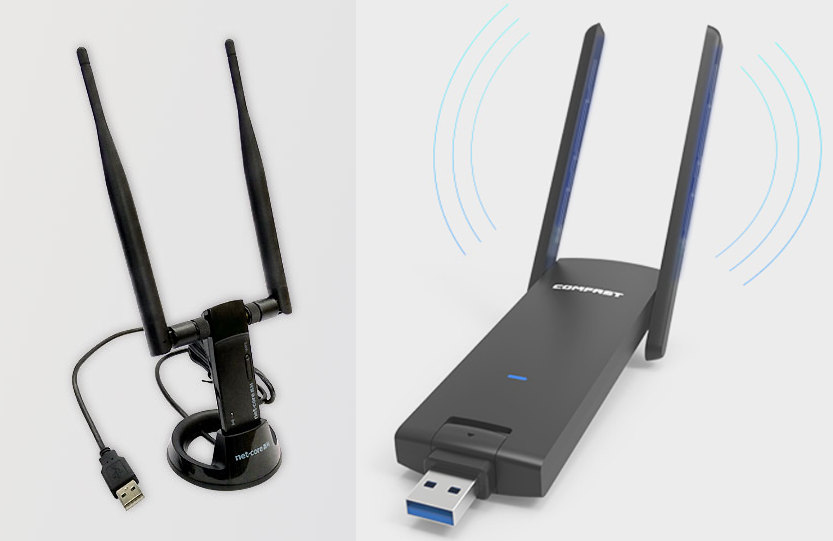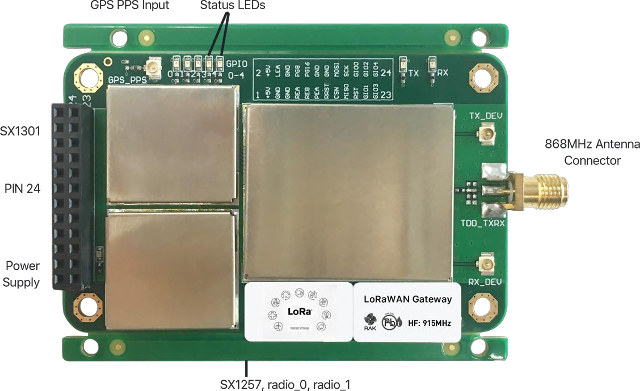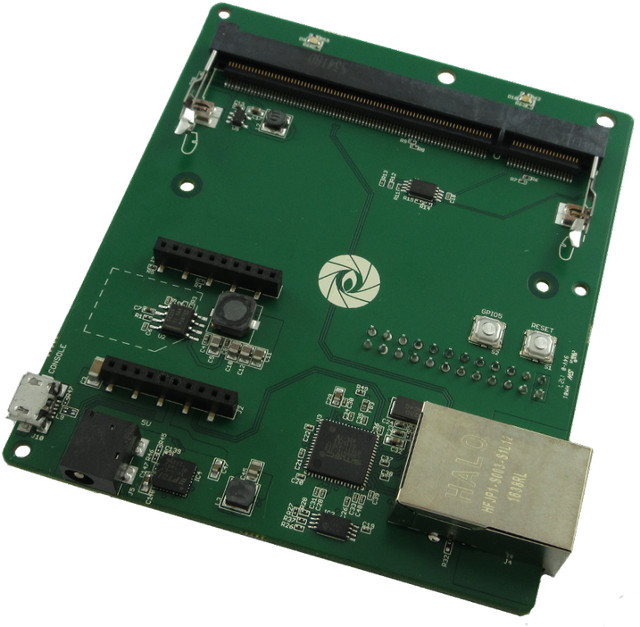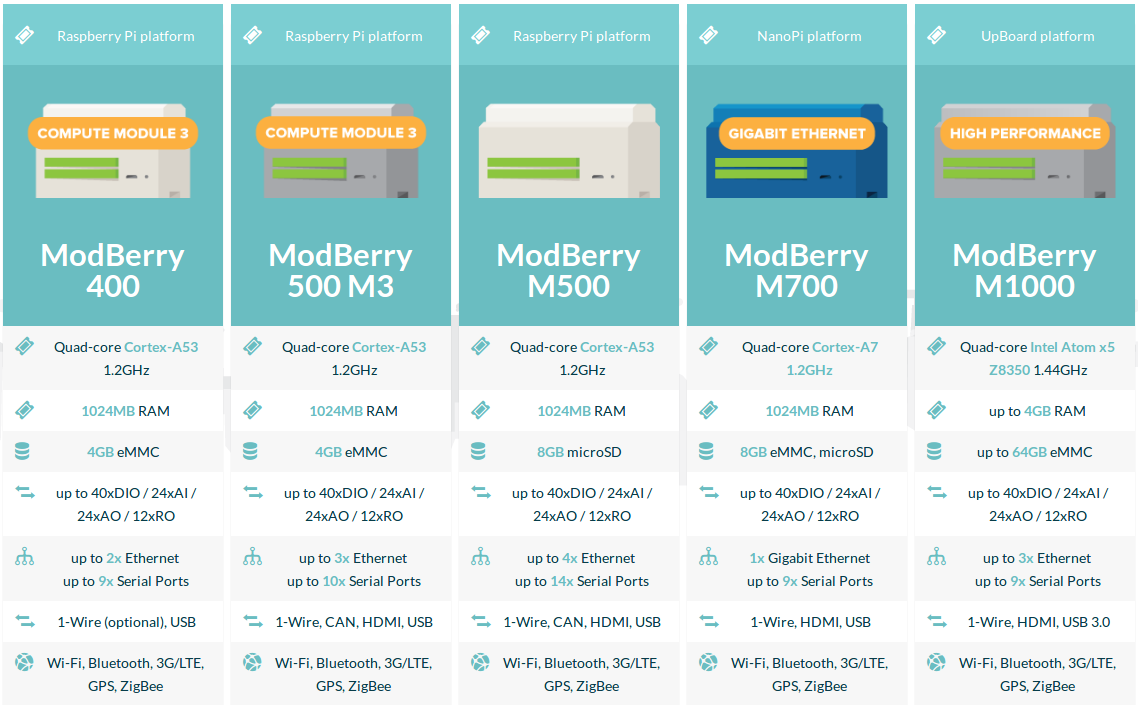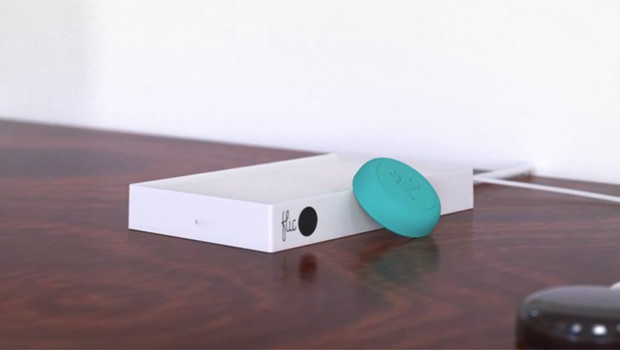When last week I reviewed Rock64 board I noticed they sold a “USB 3.0 Dual Band 1200Mbps WIFI 802.11 a/b/g/n/ac (RTL8812AU) adapter” for $19.99. So far I had only seen USB dongles with internal antennas or a single external antenna, but in the case of development boards, which may be used as routers or gateways, it makes perfect sense to get such adapter for higher performance and longer range. The only problem is that it “ships together with ROCK64 fulfillment”, meaning you can’t purchase it separately if you already have some other board to use, so I went to look for alternatives. One of the first I’ve come across was COMFAST CF-926AC with the following specifications: Chipset – Mediatek MT7612U Interface – USB 3.0 rotatable port WiFi – Dual band 2T2R WiFi 802.11ac, 802.11a, 802.11b, 802.11g, 802.11n up to “1200” Mbps (867 Mbps @ 5.8 GHz + 300 Mbps @ 2.4 […]
RakWireless RAK831 LoRa Gateway Module is Based on Semtech SX1301 Base Band Processor
We’ve previously covered several products from RakWireless, with a Realtek WiFi IoT board, a WiFi camera board, and a Amazon Alexa compatible audio board. The company has now launched RAK831, a LoRaWAN gateway board powered by Semtech SX1301 base band processor, and working with their RAK811 LoRa node or other compatible nodes. RAK831 LoRA gateway board specifications: Connectivity Semtech SX1301 base band processor with LoRa concentrator IP Frequency bands – 433, 470, 868, or 915 MHz Sensitivity – Down to -142.5 dBm Maximum link budget – 162 dB Output power level – up to 23 dBm Emulates 49 x LoRa demodulators 12x parallel demodulation paths 1x (G)FSK demodulator 2x SX1257 Tx/Rx front-ends high frequencies 2x SX1255 Tx/Rx front-ends low frequencies Range – Up to 15 km (Line of Sight); several kilometers in urban environment GNSS – Optional GPS support Host Interface – SPI Expansion – 24-pin 2.54mm pitch “DB24” header […]
Gumstix Pi Conduit Gateway Board Leverages Raspberry Pi Compute Module, Off-the-Shelf LoRa and Cellular Modules
Gumstix has designed Pi Conduit Gateway baseboard for both the Raspberry Pi Compute Module and RisingRF RHF0M301 LoRa gateway module, in order to create a Linux based LoRa gateway that can optionally support LTE or other cellular connectivity via NimbeLink Skywire cellular modem. Conduit Pi LoRa Gateway board specifications: 200-pin SO-DIMM connector for Raspberry Pi Compute Module / Raspberry Pi 3 Compute Module (CM3 / CM3L) Headers for RisingRF RHF0M301 LoRa Module NimbeLink Skywire 2G/3G/4G cellular modem connector Low profile 10/100M Ethernet jack (implemented via USB 2.0) USB – 1x micro USB port for debugging via an FTDI USB to TTL chip Misc – User (GPIO5) and reset buttons Power Supply – 5V via power barrel The board was designed using Geppetto, which means you should be able to customize it to your needs by modifying it the original design in a web browser, and order your brand new custom […]
ModBerry Industrial Automation Controllers Leverage Raspberry Pi, FriendlyELEC, and AAEON Boards and Modules
TECHBASE’s ModBerry Linux based industrial controllers have been around since 2014 with their first model being ModBerry 500 powered by a Raspberry Pi compute module. Over the years, the company has kept adding new ModBerry controllers with now an interesting choice of Raspberry Pi 3 board or compute module, FriendlyELEC’s NanoPi M1 Plus board, or Intel Atom x5 based AAEON’s UP board. All programmable automation controllers (PAC) runs Linux 4.0 or greater, with Debian or Ubuntu Core rootfs including ready tools and pre-compiled packs including C/C++, JAVA, SQL, PHP, SSH, and VPN support. The firmware is upgradeable over the air, and the controllers can run the company’s iMod control software and interface with iModCloud cloud computing service for telemetry, remote control and data sharing. Typical uses include C-L-V functions with conversion to collect and transmit data over communication interfaces, logging via iModCloud or a SCADA, and visualization via a web […]
Flic Hub Controls WiFi, Bluetooth, and IR Devices with Bluetooth LE Buttons (Crowdfunding)
This week-end, I wrote about 1btn open source WiFi button that can allow you directly control WiFi appliances, and/or set scenes without the need for a smartphone. We also discussed limitations of WiFi due to high power consumption, security issues and the one-way aspect of RF communication, and that Bluetooth 5 may be a better option for range and battery life if possible. Flic Hub is another way to approach the issue, as it combines Bluetooth LE buttons with a gateway supporting WiFi, Bluetooth, and infrared. Flic Hub gateway specifications: Connectivity – Bluetooth Classic, Bluetooth LE, WiFi, Ethernet, IR via optional add-on accessory. Audio – 3.5mm audio out/mic in Power Supply – 5V via micro USB Power Consumption – 1.5W typ. Security – SPARKE2+ Bluetooth encryption Dimensions – 85 x 50 x 15 mm Weight – 99 grams Users can configure workflows by setting up Flic with IFTTT, Zapier, Microsoft […]
Ligowave LigoPTP Bridges Allow Wireless Point-to-Point Communication up to 100 Km
Last week-end I went to a conference showcasing local products and companies, and there was a small section for “smart cities”. Most of that section exhibited solutions for security applications such as IP cameras and DVR, as well as various metal detectors, but one company did have some wireless connectivity solutions. I asked a sales engineer which technology they used, and he said it was a proprietary solution operating at 5 GHz, so I asked if they had anything relying on LoRaWan or Sigfox, and he had never heard about those. That’s because the solutions offered where not for low power long range connectivity, but instead backhaul wireless connectivity with solutions offering up to 100km range for point-to-point connectivity up to 480 Mbps, or up to 36 km for point-to-multipoint solutions. Those type of products are used by cities to monitor their CCTV system, telcos, and the industry (e.g. mining, […]
Amazon AWS Greengrass Brings Local Compute, Messaging, Data Caching & Sync to ARM & x86 Devices
Amazon Web Services (AWS) provides cloud computing services to manage & store data from IoT Nodes over the Internet, but in some cases latency may be an issue, and Internet connectivity may not be reliable in all locations. AWS Greengrass provides a solution to those issues by running some of the IoT tasks within the local network in ARM or x86 edge gateways running Linux. You can still manage your devices from AWS cloud, but a Linux gateway running Greengrass Core runtime will be able to run AWS Lambda functions to perform tasks locally, keep device data in sync, and communicate with devices running AWS IoT Device SDK. Greengrass benefits include: Response to Local Events in Near Real-time Offline operation – Connected devices can operate with intermittent connectivity to the cloud, and synchronizes with AWS IoT once it is restored Secure Communication – AWS Greengrass authenticates and encrypts device data […]
MediaTek MT7622 SoC with WiFi Network Accelerator Supports 4×4 802.11n WiFi & Bluetooth 5
MediaTek has launched a new ARM SoC for routers, home automation gateways, wireless audio and storage, with MT7622 equipped with a dual core ARM Cortex A53 processor, a dedicated network accelerator, 4×4 802.11n and Bluetooth 5 connectivity. Two models with be available: MT7622A with all features, and MT7622B with router features only, which probably mean no Bluetooth, and possibly less I/Os. MediaTek MT7622 specifications: Processor – Dual core ARM Cortex A53 @ up to 1.36 GHz Storage – eMMC and SDXC interfaces; storage accelerator (SATA 3.0/eSATA Gen2) Connectivity 802.11b/g/n WiFi @ 2.4GHz, 4T4R antenna; 802.11ac can be added through MT7615 SoC Bluetooth 5 Fast Ethernet Switch, RGMII and SGMII Network Accelerator – APT+HQoS, MediaTek Wi-Fi Warp Accelerator Audio – Audio Amplifier, I2S, TDM, S/PDIF USB – USB 2.0 host/device, USB 3.0 host Other Peripheral Interfaces – PCIe Gen 2.0, ADC, GPIO, I2C, IR, PMIC I/F, PWM, SPI, UART Misc – RTC The specs on the product […]


